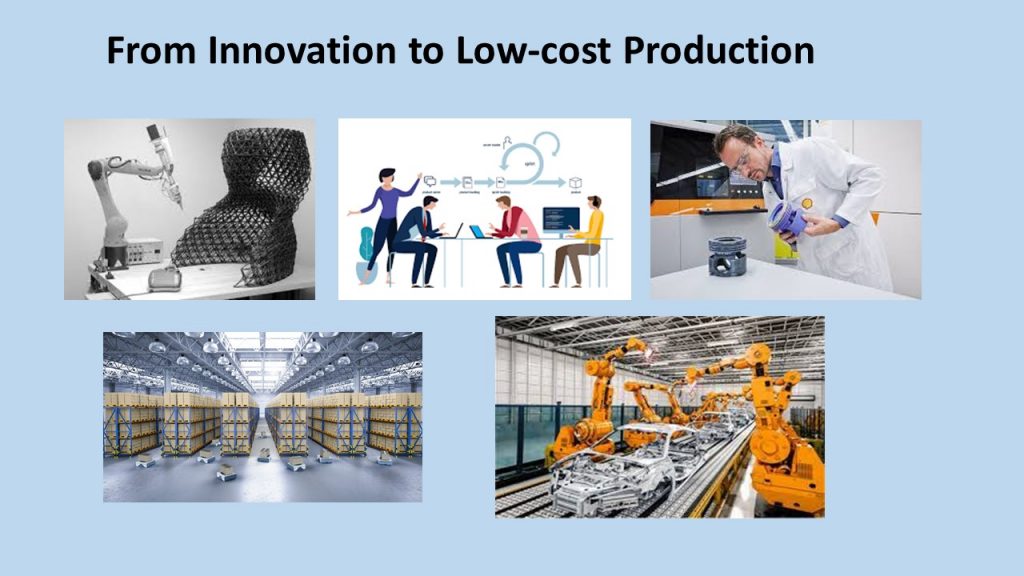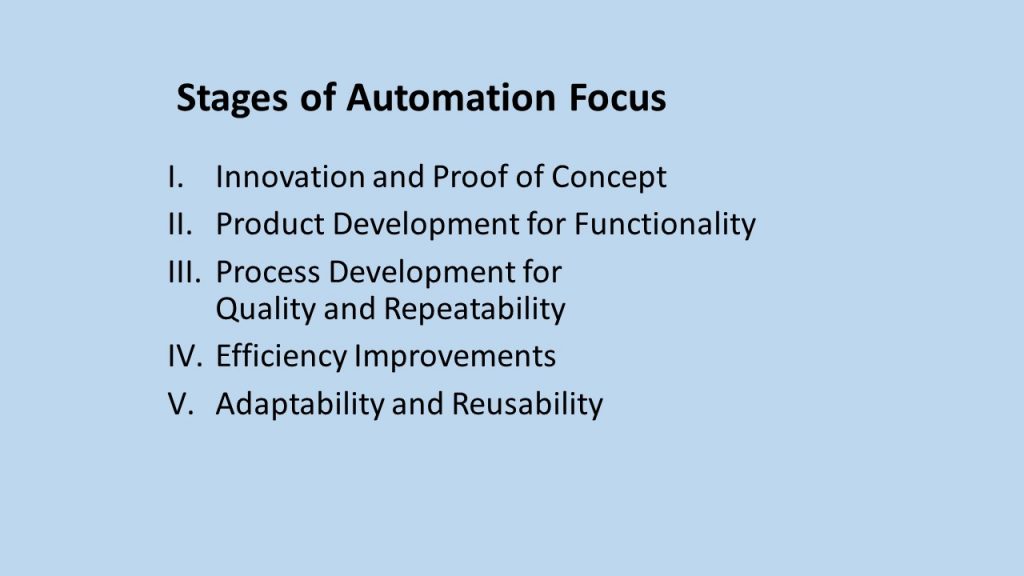
145. Automation | 自動化
– Musings of Dr. Jamie C. Hsu, 10.31.2022
Nowadays, labor shortages and wage increases are causing industries and businesses to look more intensely at automation. However, we must realize that automation should be utilized at different degrees and serve multiple purposes other than just for cost-cutting. There are stages in the total product and production cycle where automation can be applied.
At the earliest stage, the focus is on innovation and proof of concept. Computer simulation and iteration, 3-D printing, and CNC machines are used to produce prototypes that demonstrate the viability of new concepts.
After the proof of concept, the product is designed and fabricated to evaluate its functionality and performance. Simultaneously, the processes for making the product are developed and evaluated. Since both the product and process are still going through modifications, only soft programmable automation should be used to allow for iterations and changes.
Afterwards, the quality and repeatability of the alternative processes are assessed and measured. Gradually, some of the programmable machines and tooling are replaced by hard/fixed automated equipment in order to reduce the capital costs and increase the throughput.
As the process becomes more mature and the product gains more acceptance in the market, more low-cost hard automation is introduced. This is necessary to simplify the production system and allow for high-volume production. In some extreme cases, we have seen lights-out factories without any human laborers inside. It is the idealized 24/7 production process with total automation. Labor costs and labor grievances are avoided.
Eventually, due to the changes in consumer tastes/needs, and the advances of new technologies, the product has to be updated or refreshed. At such time, the production system should have built-in adaptability and can be reconfigured to be used again without becoming totally obsolete. Flexible automation is necessary in order to minimize labor costs and reduce capital costs.
In summary, automation is more than just replacing human laborers with robots. It is an essential part of improving quality, functionality, and upgradability at every phase of the product life cycle.


自動化 (2022/10/31)
-作者 許俊宸博士
-中譯 薛乃綺
如今勞動力短缺、工資上漲,導致業界更加關注自動化。然而,我們必須意識到,自動化應該在不同程度上獲得應用;並且能多方運用,而不只是為了削減成本。在整個產品和生命週期中,存在可以應用自動化的各种階段。
最初階段,當重點放在創新與概念驗證時。使用電腦模擬、3D列印以及CNC加工來進行原型試作,以證明新概念的可行性。在概念驗證之後,將設計和製造產品,以評估其功能及性能。與此同時,產品的製程也需要開發及評估。由於產品和流程都還在修改,因此只有可自動化編輯軟體能被使用,並允許迭代與更改。
在此之後,將評估及測量替代過程的產品質量、以及可重複性。慢慢的,一些可編程機器和工具,被硬體/自動化設備所取代,以降低投資成本、提高產出。
隨著製程日益成熟,產品也越來越被市場所接受,將會導入更多低成本的自動化硬體設備。這對於簡化生產系統並允許大量生產的製程是必要的。在一些極端的情況下,我們看到全自動化的工廠熄燈、內部不需要任何人工。這是全自動化的理想,每周7天、每天24小時。免掉了勞動力成本以及勞工不滿的各种问题。
最終,由於消費者的口味/需求的變化,以及新技術的進步,產品不得不更新與升級。此時,生產系統應該具有內建的適應性;並且可以重新配置能再次使用,而完全不會過時。為了最大限度地降低勞動力成本、以及投資成本,靈活的自動化是必要的。
整體而言,自動化不僅是用機器人代替人工;它更是整個產品及產製生命週期每個階段的重要組成,以期能提高質量、功能和可升級性。


